Australia’s latest inflation report all but guarantees another RBA rate hike
The numbers are in and the economist consensus was left a little blindsided after Australian inflation for the final quarter of 2022 surged by more than expected. On both the headline and trimmed mean figures, price increases continued to surprise to the upside particularly in the services economy.
The good news is that economists and the Reserve Bank alike believe this was the peak for inflation on a headline level. The bad news - and the bigger unknown now - is how much inflation has become entrenched in the system.
In this wire, I’ll break down the components of another big Australian inflation print and take you through some of what the country’s leading market minds are thinking.
Strap yourselves in. You may see the words “we now expect another rate hike” appear at some point.
The basics
- Headline inflation: +1.9% q/q (+1.7% est.) and +7.8% y/y (+7.6% y/y)
- Trimmed mean inflation (headline minus food and energy): +1.7% q/q and +6.8% y/y
- Electricity was the single biggest culprit, up 8.6% q/q
- Home building costs led declines, down 1.7% q/q
- Inflation increased across all major cities, with Perth copping the biggest gain (+3.6% q/q)
Breaking down inflation’s components
If we had to describe today’s inflation report in a word (or phrase), it would have to be “broad-based”.
Of the 87 components within the ABS’ inflation basket (model), more than 87% of them are now reporting an inflation print above 2.5% on a year-over-year basis. The reason we’re using 2.5% in this example is because it’s the mid-point in the Reserve Bank’s cherished 2-3% inflation target.
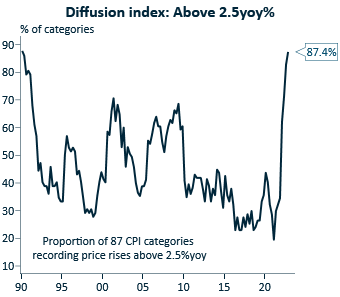
Whatever way you slice it, inflation has continued to go up but non-discretionary inflation (i.e. necessary purchases) continues to surge the most. The IFM Investors tracker has this part of the inflation basket rising 8.4% year-on-year - exactly what homeowners knew but didn’t need to hear.
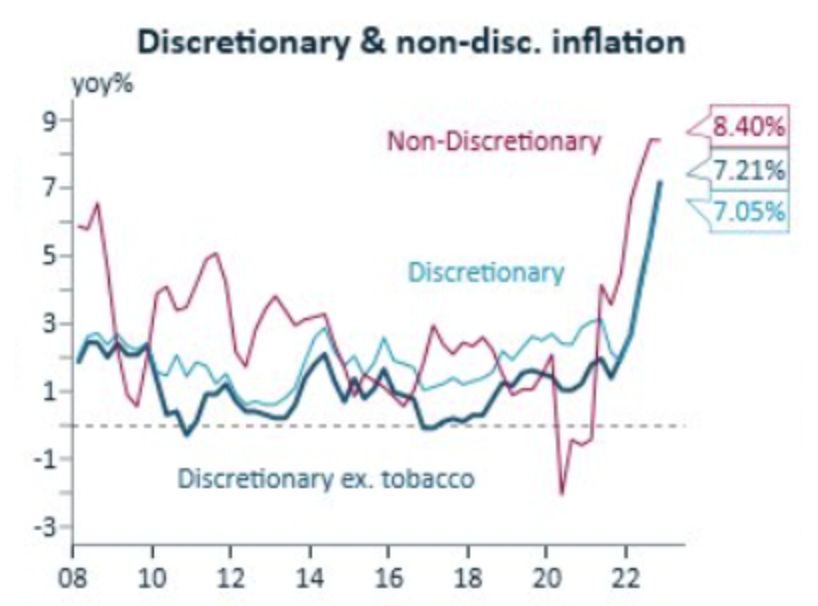
Taking out food and energy prices which often change on headlines, grocery chain sales, and other volatile factors, inflation is continuing to go up in multiples. And unlike last quarter, it’s now all about the feed-through.
- Rents are up at their fastest annual rate since 2014 in both Sydney and Melbourne.
- Housing costs are now up nearly 11% year-on-year nationwide.
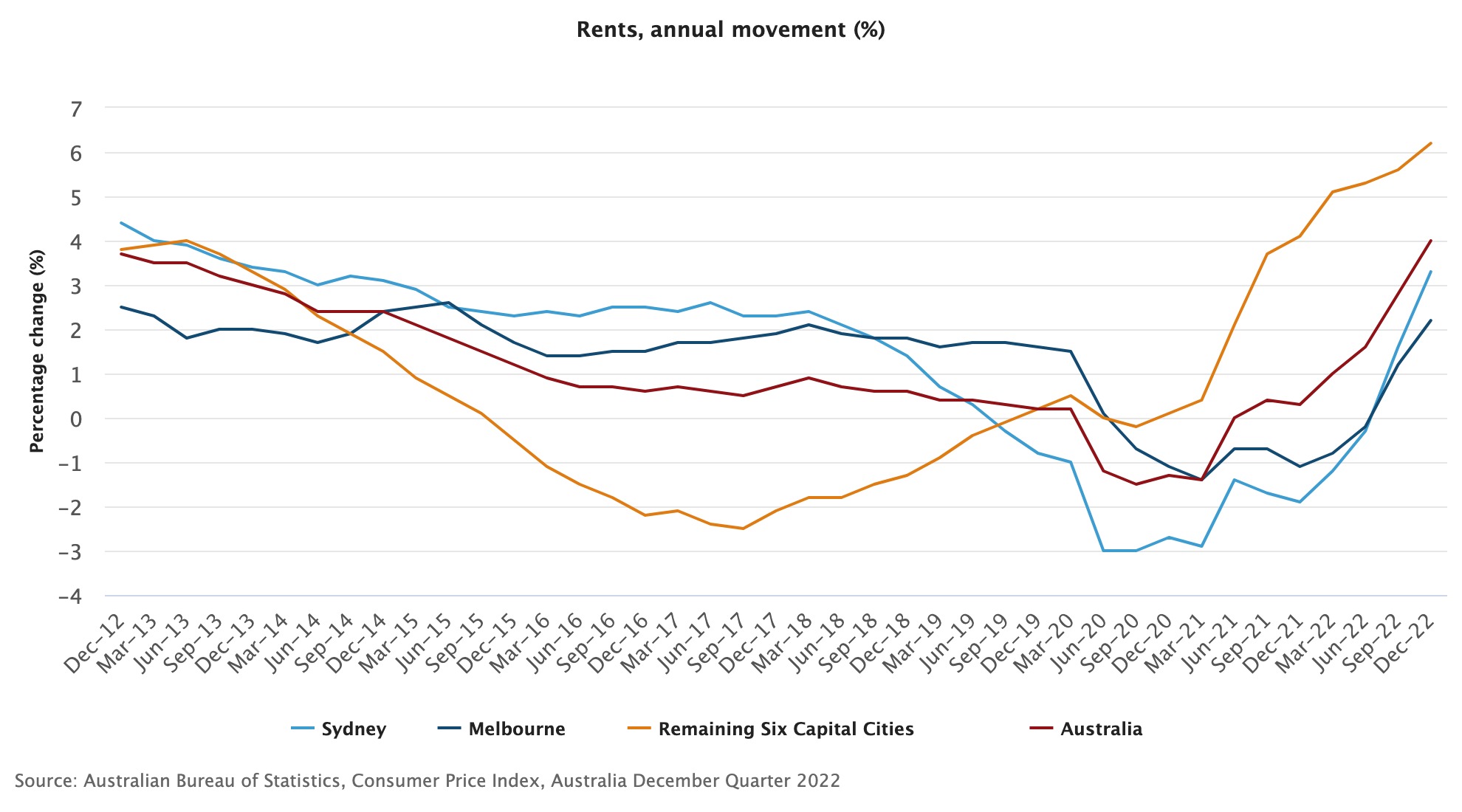.jpeg)
- Services inflation is now running at its highest rate since 2008.
- Clothing and recreational services inflation are both up 5%+, highlighting the effect wage increases are having on the retail economy.
So how did the market react?
The rates market is starting to price in a steeper curve (that is, they are expecting more rate hikes). This chart from Martin Whetton, head of fixed income at Commonwealth Bank, showcases the immediate move.
As you can see, the endgame has moved up slightly to 3.6% which is in line with some of the major research houses but a long way from mid-2022 when they thought a 4% cash rate was actually possible.
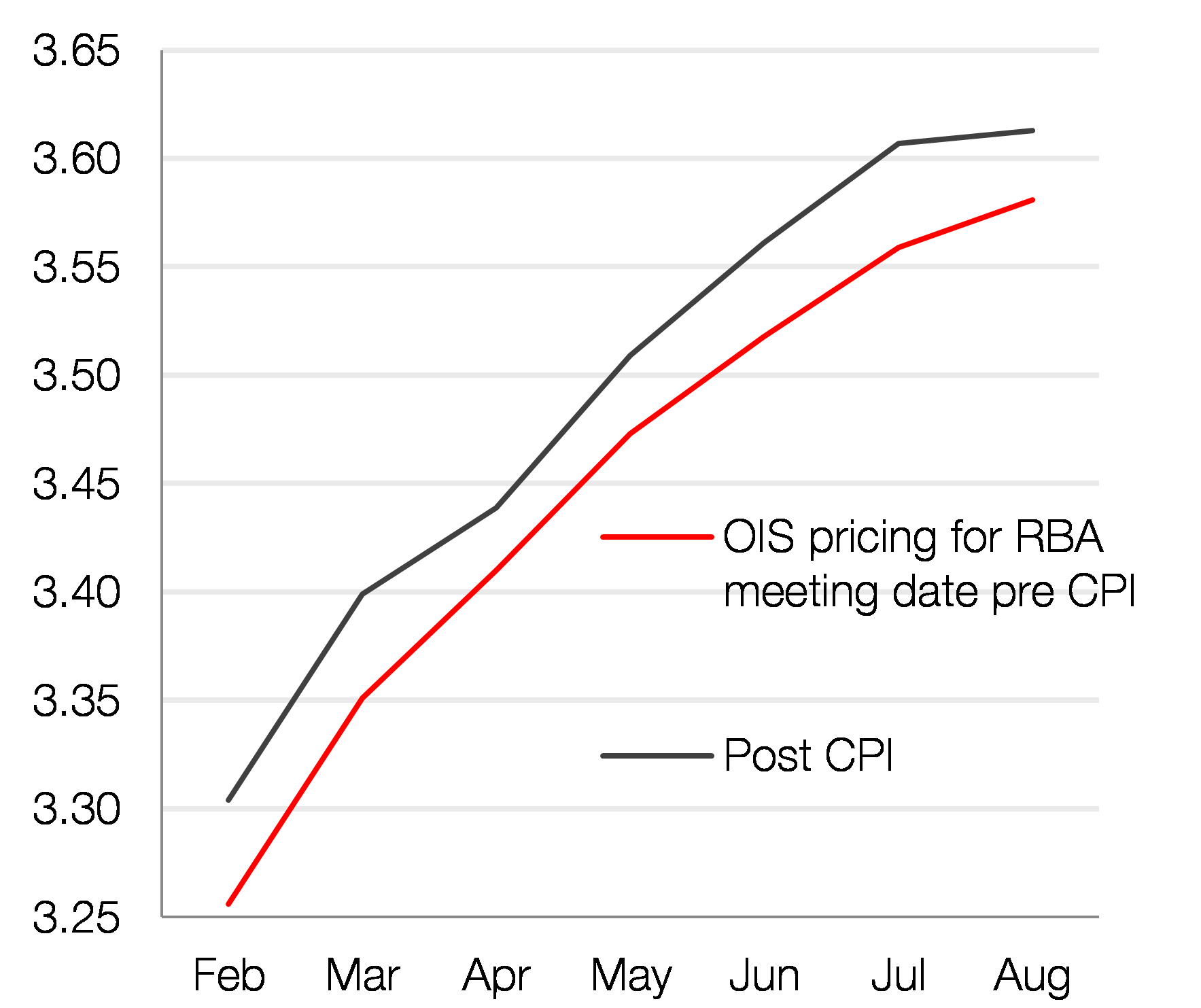
And in this chart snapped by Market Index’s very own Kerry Sun, the ASX 200 nosedived on the inflation report in a way not dissimilar to the climax of a rollercoaster ride. As of writing, it’s recovered some of those losses but not all of them.
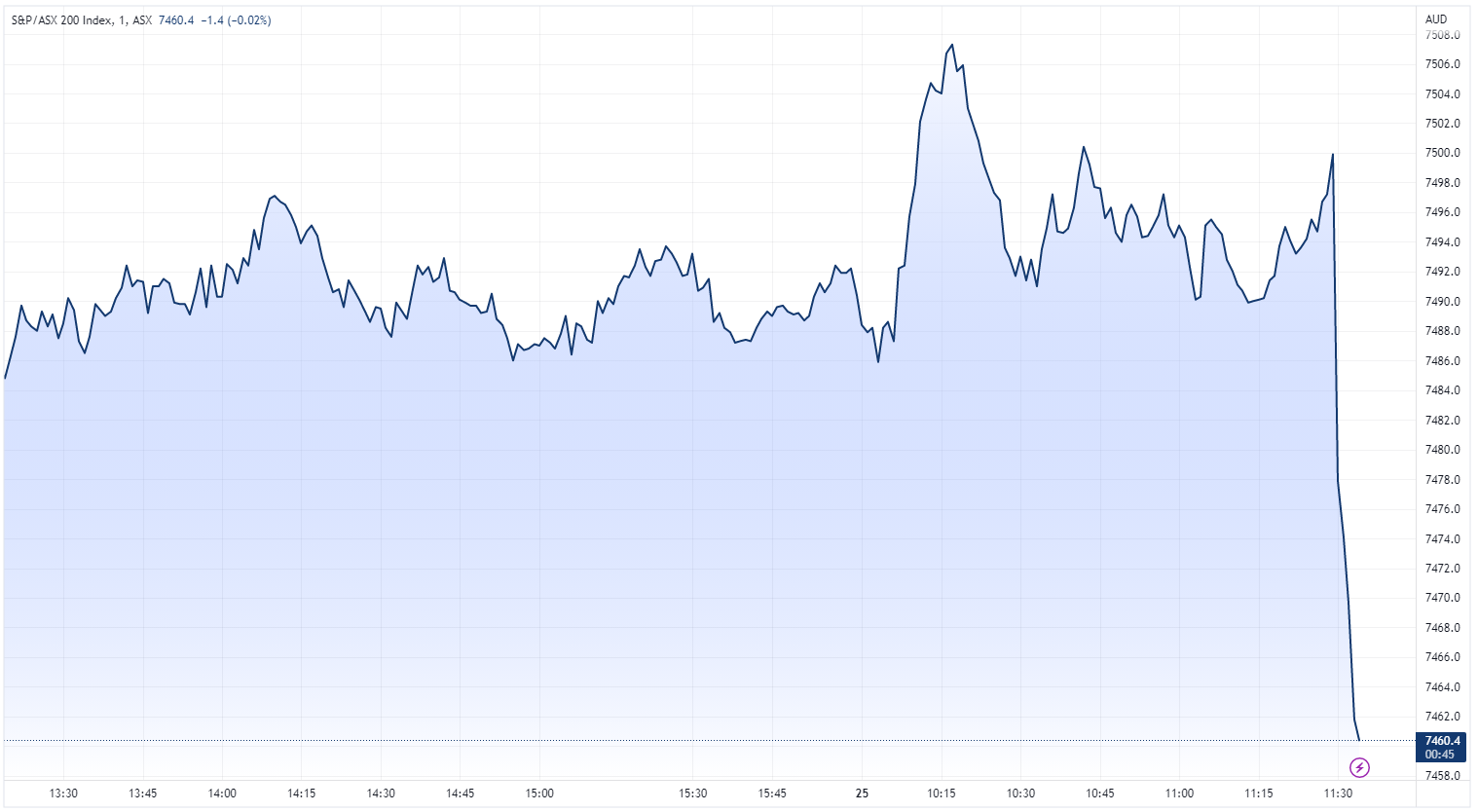.png)
So what are the economists saying?
In a note to clients, AMP’s Chief Economist Shane Oliver first thought the RBA was done last year. Today’s inflation print changed all that.
“While we have been of the view for a while that the RBA has done enough tightening and that the peak in the cash rate would be at 3.1% (its current level), today’s inflation data (especially the higher trimmed mean) and the recent strong November retail sales figures (which showed that the consumer still remains in good shape despite numerous rate hikes in 2022) means that the we now expect another rate hike in February, by 0.25% which would take the cash rate to 3.35%.”
Catherine Birch at ANZ has already priced in another rate hike for March - and now she and the team are more firm on it than ever.
“This cements a 25bp cash rate hike in February and supports our view of another 25bp hike in March, especially if we see a solid print for Q4 wages in mid-February as expected.”
Barclays’ Shreya Sodhani sees things differently. Like Oliver, she thought the last rate hike would be at the end of last year as well. But unlike Oliver, she is sticking to that call despite today’s inflation report.
“We think the bank’s outlook for [economic] growth will now be the determinant for the decision, rather than actual outcomes.”
Then, there are the people who think that the RBA should pull a real bazooka out at the first meeting of the brand new calendar year. Enter Warren Hogan, Judo Bank Chief Economist and former head of economics at ANZ.
“[The] RBA board should seriously consider a 40bp hike at the Feb meeting. They are behind the game and hoping the economy slows enough to bring inflation down. Still solid demand indicators over summer and upside surprise on core inflation suggests the early pivot hasn’t worked.”
Andrew Ticehurst at Nomura went one better than Hogan, arguing that the chance of a soft landing is disappearing fast thanks to this report.
"We see little of comfort in the data, noting higher service prices, the impact of strong demand and higher labour costs, and higher prices for discretionary items. In turn, this means inflation will likely stay sticky for some time, even as goods prices moderate and supply chain issues ease. And in turn, we think this means the RBA still has more work to do. Our RBA call is unchanged … three 25bp hikes in H1 (Feb, March and May), followed by a period of sideways, before rate cuts in 2024."
Then, there’s Governor Lowe
Finally, while we know the pain mortgage holders and investors will feel from this, there is one person who should be shaking more than anyone else - the man in the top job himself.
Governor Philip Lowe’s seven-year term ends in September, when he will either know if he’s got the job for three more years or if he’ll be replaced by someone else. And to answer a question you might have, yes, they can ask an economist from outside the central bank bubble to take on the job.
A Bloomberg poll recently suggested 11 out of 21 surveyed economists believe he deserves a second three-year term. The other 10 did not. Unfortunately, the poll’s participants preferred to remain anonymous (for the simple reason that every financial institution deals with the RBA at some point, so they don’t want to make one of their primary commercial partners upset.)
But if Governor Lowe wanted the job, he surely wouldn’t have said this recently.

So a rate hike is a high chance at the next meeting, and maybe even another one after that. But today’s report proves only one thing - inflation certainly didn’t go in the right direction at the end of last year in Australia. And that means more sleepless nights for millions of Aussies.
Never miss an insight
If you're not an existing Livewire subscriber, you can sign up to get free access to investment ideas and strategies from Australia's leading investors.
And you can follow my profile to stay up to date with other wires as they're published – don't forget to give them a “like”.
2 topics
2 contributors mentioned

